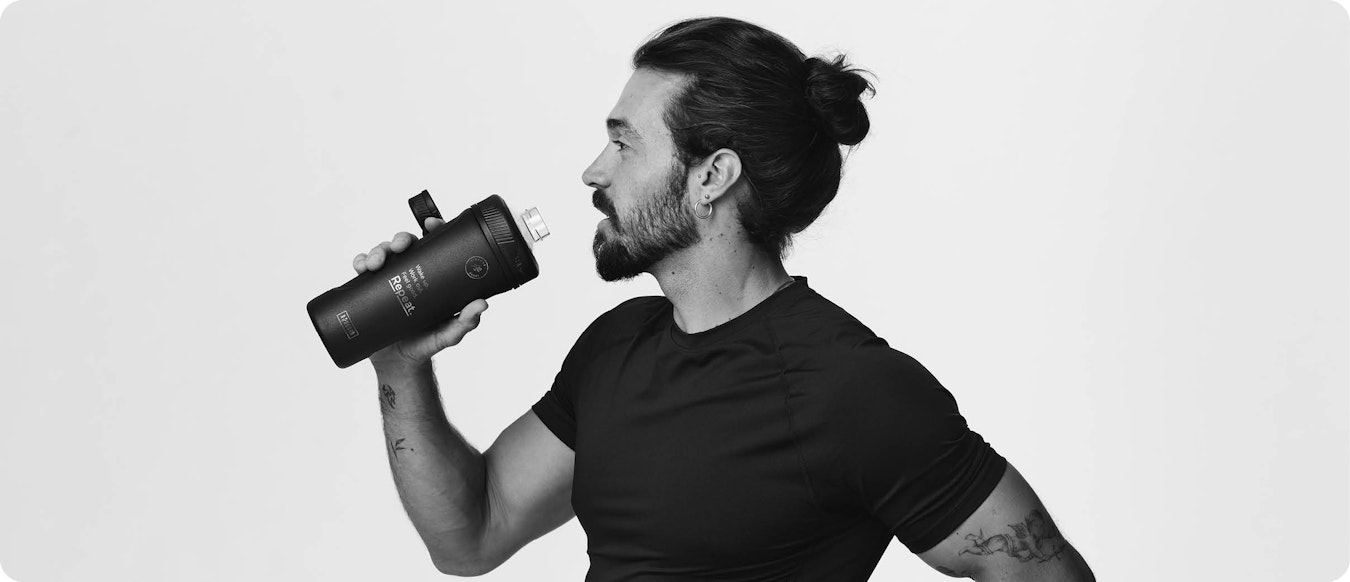The human body largely consists of water – between approx. 50 and 90 per cent depending on one’s age. So it’s no surprise that the body needs water to function. And it’s particularly important to ensure a balanced intake of fluid when we do sport. Depending on the intensity and duration of the physical activity, our fitness level and the climatic conditions, we lose between 1 and 3 litres of fluid per hour – and we need to replace that volume. Because if we drink too little, we lose steam faster. To combat that, it’s important to have the right fluid intake strategy to hand.
How much and when should I take fluids?
Optimum fluid intake during sport varies from one person to another and is determined by different factors such as body size, how long the exertion lasts, how much you sweat, and your physical fitness. But let’s take a closer look at the various points in time.
Before sport
As a general rule: don’t start exercising when you’re thirsty. We recommend “prehydration”, particularly before physical activity lasting for more than 1 hour or if you’re doing several units in quick succession (e.g. during competition). This means ensuring that your water reserves are well-stocked before training – around half a litre in the two hours before you start. If you expect to sweat a lot, “top up” with 200 to 400 ml of fluid 30 minutes beforehand.
During sport
If the physical activity takes less than one hour, you don’t necessarily need to take a drink, but your body may benefit from a sport drink with carbohydrates. However, if you are exercising for more than 60 minutes you should definitely give your body some fluid. The volume very much depends on the ambient temperature. At approx. 18 ºC, 400 to 800 ml per hour is recommended – and correspondingly more the warmer it gets. Remember to drink slowly, otherwise you may get a stitch.
After sport
After sport you should consume the volume of fluid that corresponds to around 1½ times the amount of sweat you have shed. There’s a trick for determining how much fluid you have lost: simply weigh yourself before and after doing sport. If you weigh 500 grams less after sport, for instance, this corresponds roughly with the volume of sweat produced – i.e. 500 ml. If you follow this recommendation, you should definitely consume around 750 ml of fluid in the shape of a sport drink, to replenish your reserves.
Before and during sport, RINGANA SPORT boost provides the fluid supply and energy you need for optimum performance. After sport it replenishes empty reserves, and boosts regeneration.
What defines the ideal sport drink?
The sport drink’s composition is crucial – whereby carbohydrates and electrolytes play a key role. Why? Carbohydrates are the No. 1 source of energy, and one of the things they support is our endurance. Physical exertion and sweating cause the loss of electrolytes. To avoid any drop in performance, it’s important to adequately replace the body’s electrolytes.
RINGANA SPORT boost is a sophisticated carbohydrate-electrolyte solution with valuable bioactive components. As such, it provides the body with a lasting supply of energy, contributes to maintaining endurance, and improves fluid intake. It is important to choose a carbohydrate-rich, slightly hypotonic or isotonic sport drink rather than pure water, particularly during intensive physical exertion that goes on for several hours, because these kinds of drinks can be best absorbed by the body.
Tips for preparation
Put RINGANA SPORT boost into the RINGANA SPORT BlenderBottle® with 600 ml water, and shake! That will give you an effective, isotonic sport drink for intensive and longer physical exertion – and it contains no artificial additives.
To prepare a slightly hypotonic solution, simply mix RINGANA SPORT boost with up to 800 ml water. In relation to the volume of fluid, the drink contains less carbohydrates and electrolytes than the isotonic version, so it’s the perfect choice for physical exertion of shorter duration.


 Zur Übersicht
Zur Übersicht